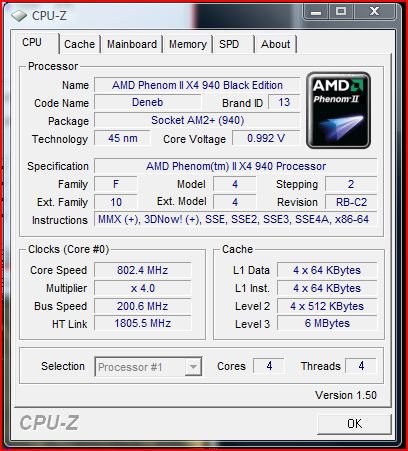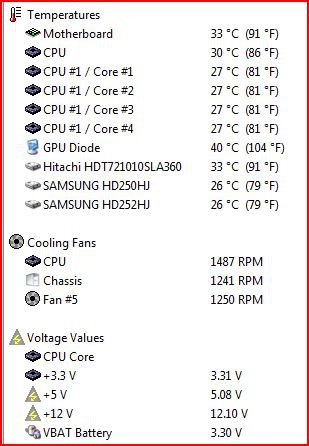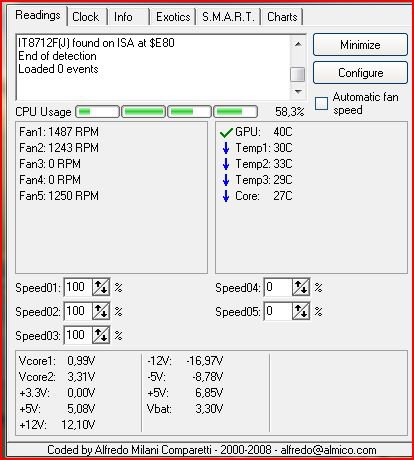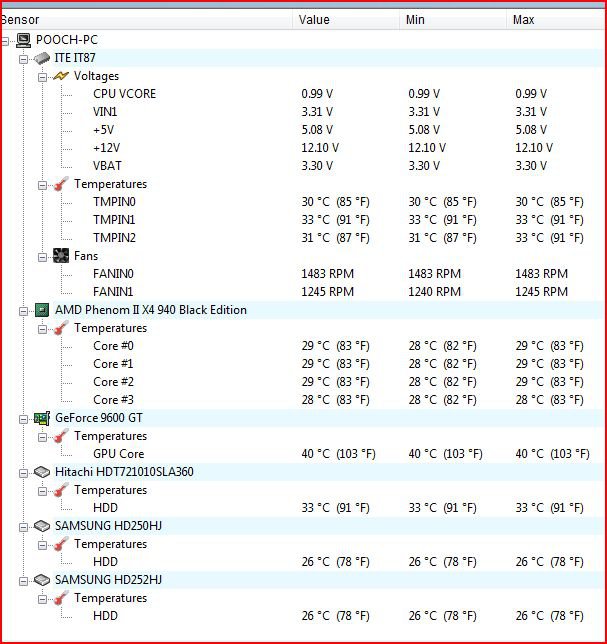No I haven't done all three at the same time; they were done in succession, one after another.
However, I think I know what's going on, and it has to do with the Temperature Junction setting used for a given CPU by the temperature reading software.
Temperature Junction or Tj. Max is the maximum theoretical temperature a core can reach before shutdown. As we can see by these programs, there are various opinions as to the max T-Junction of a B3 Q6600.
Now… let's use
Core Temp as a baseline with TJ Max of 85 degrees for a B3 Q6600.
Now if you compare
Everest's TJ Max reading of 90 degrees and look at its temp readings of my Q6600, you’ll notice they are 5 degrees higher than Core Temp’s, which also corresponds to the 5 degree difference in the TJ Max readings. 85 for Core Temp, 90 For Everest.
Now, again, using Core Temp as a baseline and comparing
SpeedFan's readings, (here's where a little guesswork comes in, as I don't see a TJ Max reading in SpeedFan) we can see the temps are 15 degrees higher than Core Temp's reading. Using the TJ Max delta logic, I can surmise that the TJ Max used in SpeedFan is probably 100 Degrees.
So…using the TJ Max readings you can see that the temp readings are the same across the board.
Core Temp (Tj Max 85) – Temp reading 32, 32, 28, 28
Everest (Tj Max 90) – Temp reading 37, 37, 33, 34
SpeedFan (Tj Max 100?) – Temp reading 47, 47, 43, 43
Incidentally Core Temp and
Real Temp use the same Tj Max settings and give identical temp readings.
So…which one is accurate…to find that answer we need to know what the “true” t-max reading of a B3 Q6600 is (something I guess Intel is keeping secret about?).
However, Intel does list the
Thermal Design Power of a B3 Q6600 as 105 Degrees and the
Thermal Specification as 62.2 degrees, but these are not the same as Temperature Junction.
Here’s a good article at Toms Hardware on temperature readings on quad core CPU’s -
Core 2 Quad and Duo Temperature Guide

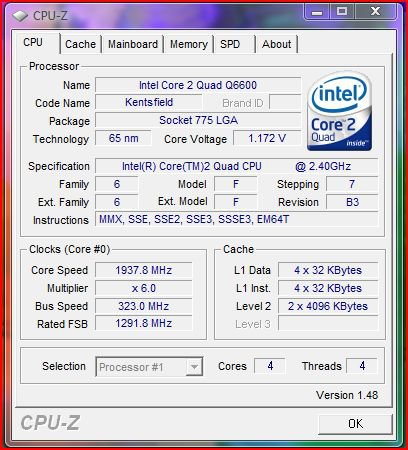
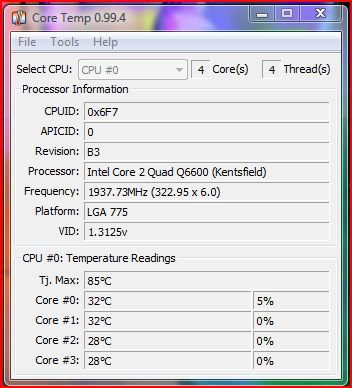
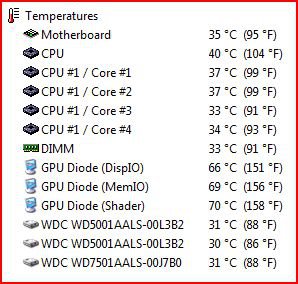
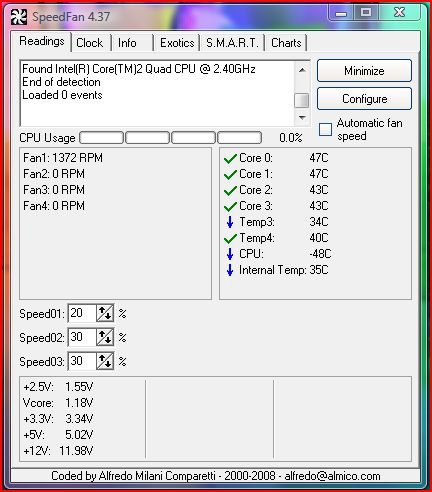
 Nice explanation by the way. Have you used all the latest versions as I would like to try it on my compy and see what results I get with an AMD
Nice explanation by the way. Have you used all the latest versions as I would like to try it on my compy and see what results I get with an AMD